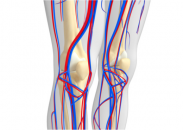Fragmented sleep and lower sleeping time have a higher risk of subclinical atherosclerosis in multiple territories. These results highlight the importance of good sleeping habits for good health and against cardiovascular disease. This comes out when binge watching online series on TV or any mobile device has become the norm. Online “streaming” is silently stressing…
Is the Obesity Epidemic Putting Patients’ and Physicians’ Health at Risk?
Is the Obesity Epidemic Putting Patients’ and Physicians’ Health at Risk? In addition to the obvious negative effect on patients, obesity can also affect Interventional Cardiologists’ health, seeing as it involves increased exposure to radiation. Operators are clearly and increasingly exposed to radiation as patient body mass index (BMI) increases. Radiation exposure might be…
The 10 most consulted articles at SOLACI during 2018
1- New High Blood Pressure Guidelines The wait is finally over: the high blood pressure guidelines that have been in the works for the past 3 years saw the light of day at the American Heart Association (AHA) 2017 Scientific Sessions. Read more 2- The 10 Commandments of ESC’s New STEMI Guidelines The authors…
The 10 Most Read Articles of December
1- Everolimus-Eluting Stents Finally Have a Rival and Not Just a “Non-Inferior” Stent In this large randomized trial, there were significant differences as regards both target-lesion failure and target-vessel-related infarction, which persisted through a 2-year follow-up and favored treatment with an ultrathin-strut bioresorbable-polymer sirolimus-eluting stent (Orsiro) compared with the gold standard, a durable-polymer everolimus-eluting stent…
Vascular Surgeons of the Future in the Endovascular Era
The use of endovascular aneurysm repair (EVAR) for the treatment of infrarenal abdominal aortic aneurysms is widely spread, due to its minimally invasive approach, rapid recovery, and better short-term survival. Approximately 60% of all infrarenal abdominal aortic aneurysms (AAAs) repairs in Europe and 85% in the United States are by EVAR. A decade ago, we believed…
Infrainguinal Bypass Following Failed Endovascular Intervention Has a Different Outcome
We often inform our patients we should first approach the superficial femoral with an endovascular intervention, and that should it fail or develop restenosis, we could always resort to a bypass. We were not lying when we’d assume a bypass following endovascular intervention would have the same outcome as a primary bypass. Simply put, no…
The Importance of Tibial Artery Patency in the Rechanneling of the Femoral Artery
After rechanneling occluded superficial femoro-popliteal arteries, interventional physicians are left with the question of how to proceed with infrapopliteal disease. This work (soon to be published in Eur J Vasc Endovasc Surg) shows us the importance of achieving patency in tibial arteries so as to obtain better mid-term outcomes. The gist is that, after an…
MR CLEAN Registry: “Time is Brain” is a Far More Accurate than “Time is Heart”
Time to endovascular treatment after ischemic stroke is strongly associated to functional outcomes. This association could be even stronger than previously suggested in more select populations of controlled studies. These findings emphasize that functional outcomes after endovascular treatment could be improved significantly by reducing onset to treatment times. Randomized studies in select acute…
Exercise Programs in Peripheral Artery Disease
Programmed exercises are recommended as initial management strategy for patients with peripheral artery disease (PAD). Most exercise programs include supervised treadmill walking twice or three times a week in a strategic facility (such as a gym). PAD patients often give up on these programs seeing as they might find it difficult to keep to a…
Effect of More Expedited Carotid Intervention on Recurrent Events
This study shows the benefit of reducing waiting time between acute events and intervention in patients with severe symptomatic carotid stenosis. Its outcomes support the efforts to reduce patient management. Moreover, it could be used as an indicator of clinical practice quality. The risk of recurrent events after an ischemic event is significantly higher in…
Safety of Early Carotid Artery Stenting in Symptomatic Patients
This work shows the safety of carotid artery stenting within 14 days of a stroke and, so far, this is the largest series of symptomatic patients published by an institution. The exact moment to conduct this procedure after an acute stroke is still controversial, although most publications so far have favored early endarterectomy over early angioplasty.…










